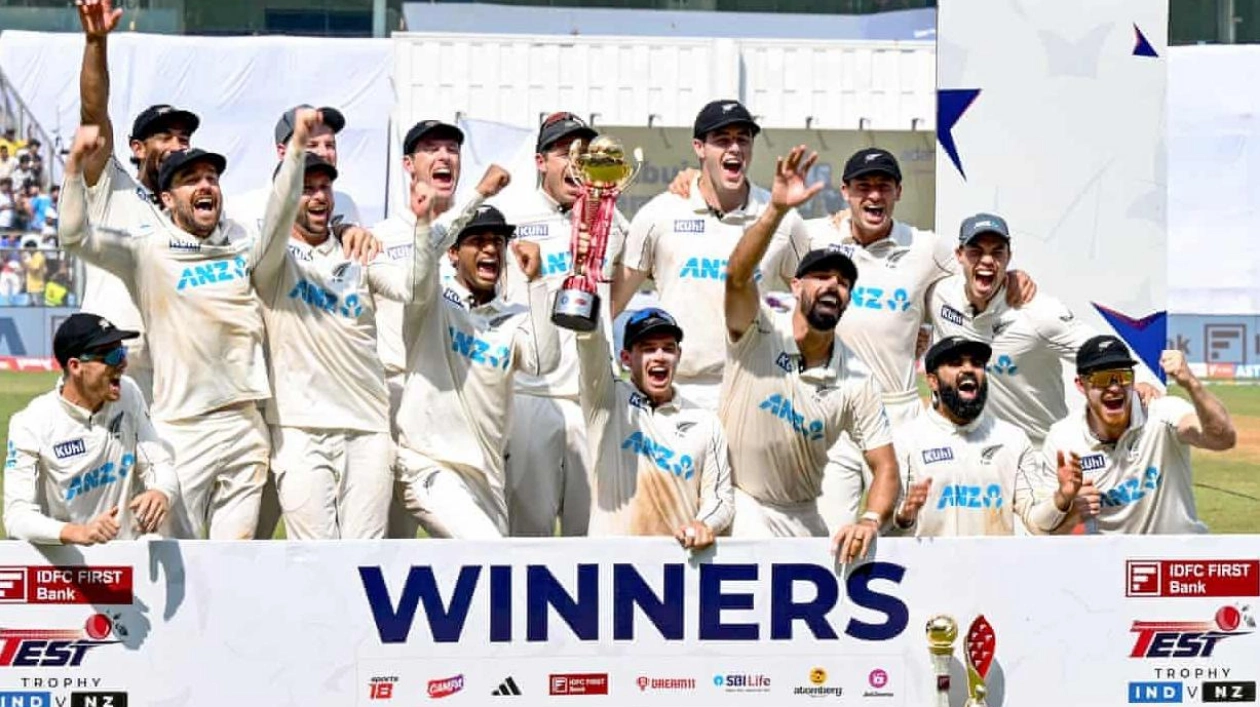A week has passed since New Zealand's 3-0 victory in India, yet the impact of this result remains profound. When considering the historical context, the economic disparities, India's 12-year reign of supremacy on their home turf, and the absence of Kane Williamson, New Zealand's batting legend, it becomes increasingly difficult to identify a comparable away triumph in recent cricket history.
India's formidable stronghold was bound to be challenged eventually, especially as the golden era of their cricket team begins to show signs of aging. But for New Zealand to be the ones to break through? Their first Test win in India since 1988, followed by a complete sweep? "We're just a bunch of Kiwis taking on the world," remarked Daryl Mitchell, encapsulating the spirit of a team that likely fixed the dressing room tap before departing. This achievement stands as a generational milestone, one whose glow is unlikely to fade anytime soon.
Moreover, this victory has broader implications for Test cricket. In their typically modest manner, New Zealand has significantly altered the landscape of the World Test Championship, setting the stage for an intense three-month period of Test tours. Five of the nine teams are still in contention for next year's final at Lord's, with England, currently in sixth place, not among them.
The WTC, though far from perfect, aims to infuse Test cricket with renewed narrative and excitement. Its two-year league phase is heavily imbalanced, and the third consecutive final being held in England has sparked discontent overseas. Additionally, Afghanistan, Ireland, and Zimbabwe are excluded, symbolically peering through the window like Dickensian orphans.
Despite these flaws, the WTC's scoring system, introduced as a pandemic-era improvisation, manages to maintain a semblance of balance. However, until the financial distribution in international cricket becomes more equitable, this system will have to suffice.
Following a month of unexpected results, culminating in New Zealand's stunning victory, the upcoming fixtures promise to be thrilling. A month ago, India was poised for a third shot at the ICC mace. Had they defeated New Zealand, they would have entered the Border-Gavaskar Trophy with significant breathing room. Instead, they now find themselves in a tight race, requiring four wins from five matches in Australia to secure their position.
Australia, leading with 62.5%, faces its own challenges. To secure a spot outright, they likely need to win five of their remaining seven Tests. Sri Lanka, currently in third place, and South Africa, in fifth, also have clear paths to the final. New Zealand, sandwiched between them in fourth, will host England for three Tests before Christmas, with another 3-0 win potentially securing their progression.
The identity of the finalists may not be determined until the final day of Sri Lanka versus Australia in early February, creating a slow-burn drama that contrasts with the rapid excitement of T20 leagues. England, self-proclaimed Test cricket evangelists, should not be content with their current role.
1. Australia: 62.5%
Best possible finish: 76.32%
Remaining fixtures: Five Tests vs India (home, Nov-Jan), Two Tests vs Sri Lanka (away, Jan-Feb)
2. India: 58.33%
Best possible finish: 69.30%
Remaining fixtures: Five Tests vs Australia (away, Nov-Jan)
3. Sri Lanka: 55.56%
Best possible finish: 69.23%
Remaining fixtures: Two Tests vs South Africa (away, Nov-Dec), Two Tests vs Australia (home, Jan-Feb)
4. New Zealand: 54.55%
Best possible finish: 64.29%
Remaining fixtures: Three Tests vs England (home, Nov-Dec)
5. South Africa: 54.17%
Best possible finish: 69.44%
Remaining fixtures: Two Tests vs Sri Lanka (home, Nov-Dec), Two Tests vs Pakistan (home, Dec-Jan)
Source link: https://www.theguardian.com






